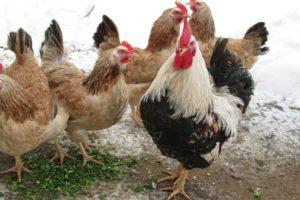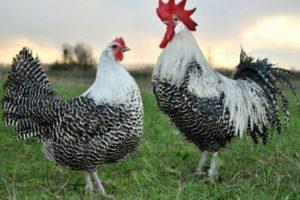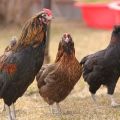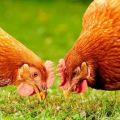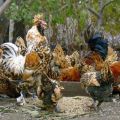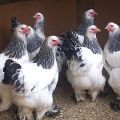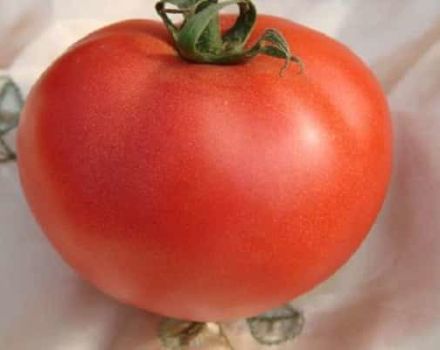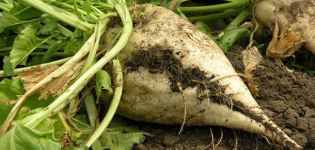Characteristics and description of the Cochinchin chicken breed, maintenance rules
Ornamental poultry breeds are bred mainly for their excellent external qualities. Such are the Cochinchins - a breed of large, beautiful chickens, distinguished by luxurious, bright plumage. Cochinchins are the favorites of the owners of personal farmsteads for their docile nature and beauty. In addition, these birds have good productivity on a private farm scale: they give very tender and tasty meat, and young hens are quite egg-laying.
The origin of the Cochinchin chickens
The homeland of the Cochinchin chickens is the area of the same name in the southeast of Indochina. Modern Cochinchins were obtained by crossing representatives of the local breed with European meat chickens.
Due to their good decorative qualities, the birds quickly gained popularity in European countries and repeatedly won at international exhibitions. The Cochinchins were brought to Russia at the end of the 19th century.
The decorative and productive qualities of birds interested many breeders, who willingly began to work with them, developing the meat and egg direction. New meat breeds appeared, bred on the basis of the Cochinchins (Brama). In the future, the breed lost its industrial significance - now it is bred only for the sake of excellent decorative qualities.
Description and characteristics of the breed
Cochinchins are much larger than chickens of other breeds. These are birds with a noble posture, formed by a wide body and high-set wings. The graceful small head is adorned with a straight ridge with well-defined teeth. The entire body is enveloped in rich, bright plumage, including the metatarsus and toes. The neck is equipped with a luxurious mane.
The peculiarity of the breed is a short, fluffy tail, which makes the whole figure look massive and squat. The weight of a rooster can reach 5.5 kilograms, and a chicken can weigh 4.5 kilograms. When assessing the degree of compliance of an individual with a breed standard, one of the most significant criteria is the spherical shape of the body.
Appearance and varieties
The standard allows for the existence of several intra-breed types, differing in color. Each of these types has special characteristics that determine the purity of the breed. A common feature is a lush and elegant plumage.Among the Cochinchins, value is mainly represented by decorative qualities, therefore, the color is given special importance.
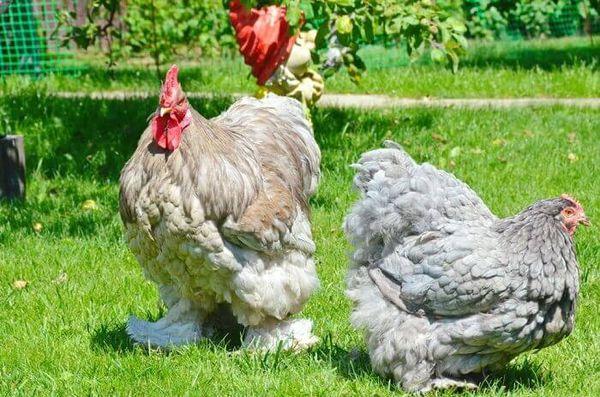
Blue
The plumage of blue Cochinchins is gray with a blue tint. Feathers and tail should be evenly colored. The presence of light fluff and small dark inclusions in the main background is allowed. White markings on the tail and wings are the breed's fault.
Silver-bordered
The coloration of the silver-bordered birds is very interesting - white and silver feathers with black edging around the edges.
Fawn
The color of birds of the Cochinchin breed with brownish plumage having a mustard tint, with a bright yellow beak and yellow-red metatarsals is called fawn. The tail may be slightly darker, and the beak must be colored to match. Dark blotches in a fawn color are considered a marriage; such birds are not allowed for breeding.
Black
This is the most common color, formed by black feathers with a green and blue tint. The beak must be yellow. The color of the metatarsus is yellow with green. A feather that casts brown indicates the uncleanness of the breed, such an individual is discarded.
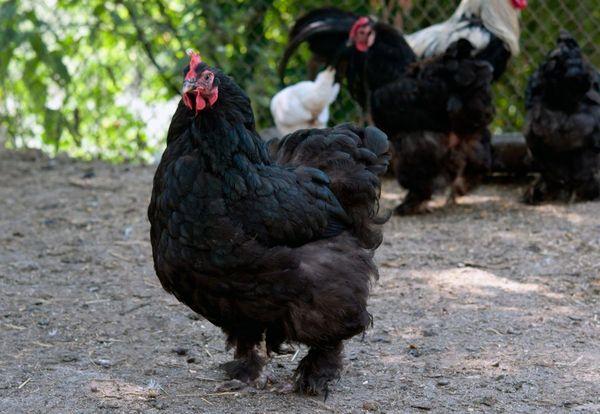
White
Birds of white color have snow-white or white plumage with a silvery sheen. The color of the beak is necessarily yellow. The presence of feathers of a different color is the reason that the bird will not be allowed for breeding.
Partridge
These hens have very beautiful variegated plumage. In roosters, the chest and belly are dark red or brown, turning yellow on the tail, wings and neck. The head is brownish-red, striped. Females have brown plumage, with a golden tint all over the body. Another adornment is a golden border around the edge of the feathers.
Dwarf
Dwarf Cochinchins are smaller. The maximum weight of the cockerel is 1.2 kilograms, and the chicken is 800 grams. Accordingly, birds carry small testicles, their egg production is also slightly lower. They have a very soft plumage, mostly colored golden.
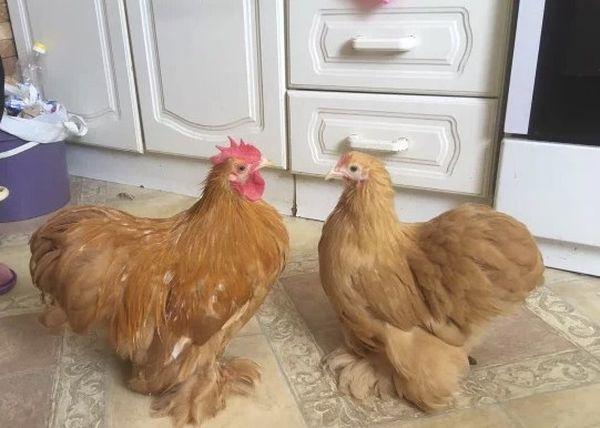
Differences between a rooster and a chicken
In adolescence, Cochinchin hens and cockerels look almost the same. The first signs indicating belonging to one or another sex will appear when the birds reach one and a half months. A rooster at this age already looks more massive than a chicken. It has darker plumage, and the crest is large and bright. The neck and chest are decorated with long braids.
The distinctive features of chicken are as follows:
- she looks squat, has a very short tail;
- she has a thicker plumage in the region of the lower back, legs and feet;
- her body is slightly tilted forward;
- the head and scallop look small and neat.
The nature and temperament of birds
Cochinchins have a balanced character, in any situation they are calm and phlegmatic. They rarely run, prefer to walk or sleep. They are strongly attached to the owner, so the change in the chicken coop and the usual environment makes them suffer. Especially these features are inherent in the dwarf variety of the breed. Because of these qualities, many farmers keep them simply as pets.
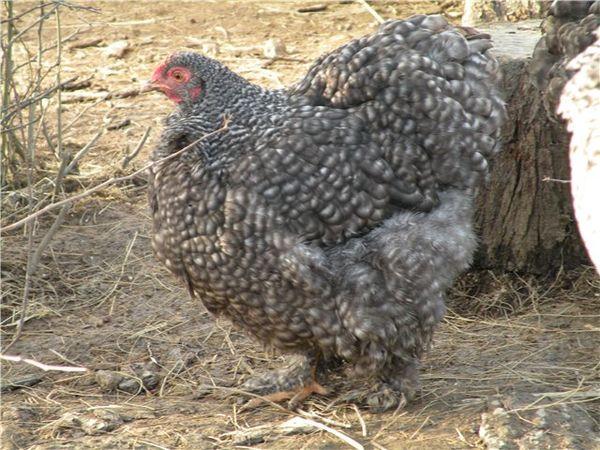
Birds get along well with representatives of other breeds. Males are not aggressive, and several males can live in one chicken coop at the same time.
Females have a well-developed hatching instinct. Having made a clutch, they diligently hatch eggs, and then become caring mothers for the hatched offspring.
Breed productivity
Birds of the Cochinquin breed have an average egg production that ranges from 100 to 130 eggs per year. Birds mature quite late - puberty occurs at 8-10 months. In the first year, they usually bring no more than 80 eggs.
The main direction of the Cochinhin breed is meat. Poultry meat is tasty, tender, with a moderate fat content.
Advantages and disadvantages of Cochinquins
The breed has significant advantages outweighing disadvantages. This allows the birds to be used not only for decorative, but also for practical purposes.
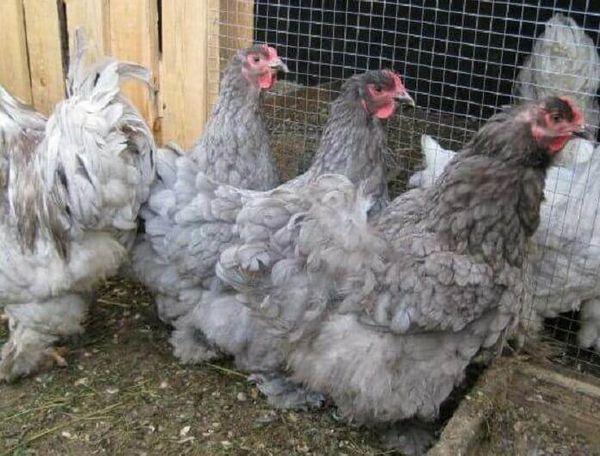
The positive qualities of the Cochinchins are as follows:
- give a large amount of tender meat;
- unpretentiousness, keeping the livestock in adverse conditions;
- egg production does not decrease in winter;
- strong instinct for hatching eggs and raising offspring;
- no need for large walking areas;
- get along well when kept in the same room;
- have a spectacular appearance.
Of the shortcomings of the breed, the following are significant:
- long period of puberty in birds;
- at home it is difficult to preserve the breeding qualities of chickens;
- high cost of eggs and young animals.
Care and maintenance
The breed is unpretentious, maintenance and care are not difficult. When organizing them, you need to get acquainted with the characteristics of the character of birds and their main breed qualities.

Thick plumage is a reliable protection from the cold, so the birds feel good even in the harsh winters of Central Russia. But young Cochinchins fledge slowly, and until that time they must be protected from the cold.
Arrangement of the poultry house and walking area
The ideal Cochin Coop is a spacious, clean, dry, warm space with roosts located as far as birds can reach. The bars should be thin and strong so that the birds can sleep comfortably while sitting on them. On the floor, they will feel uncomfortable.
The floors in the chicken coop should be made of wood or concrete, with straw or sawdust underlayment. The poultry house does not need to be insulated, but care must be taken that the room has a normal humidity level (otherwise the feathers will suffer).
Birds are not picky about the room for walking. In winter they do not need it, but in summer it can be made small. It must be arranged on a hill where there is no probability of stagnation of rainwater. The site is covered with sand or hay, a container with an ash mixture (ash with sand in equal proportions) is placed to clean the feathers and protect against parasites. High fencing is not required as the birds do not attempt to fly due to their large body weight and weak wings.
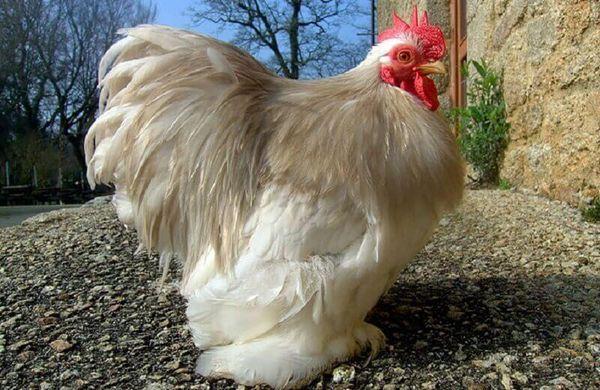
It is recommended to keep cocks and chickens in separate rooms to keep the mating process under control. Failure to do this can damage the wings and crests of birds.
Feeders and drinkers
The diet of a rooster should differ from that of a chicken, and this must be taken into account when arranging feeders. If the birds are kept together, then the feeders for them are arranged at different heights. For a chicken, it is fixed at a height of 2 centimeters above its chest. This will allow the bird to tear the feed less and empty it onto the bedding. This feeder is closed from above with a net so that the rooster does not have the opportunity to peck on feed that is not intended for him.
For a rooster, the feeder is placed higher - at head level. So chickens will not be able to get someone else's food. It is recommended to install multiple feeders so that the birds feed at the same time. Plastic drinkers are used for liquid feed, and wooden feeders for dry food.
The water trough is installed at the level of the bird's chest. Water is added three times a day in summer and twice a day in autumn and winter. It is necessary to ensure that the water is constantly fresh, because the amount of liquid drunk by the birds is 2 times more than the amount of food eaten.
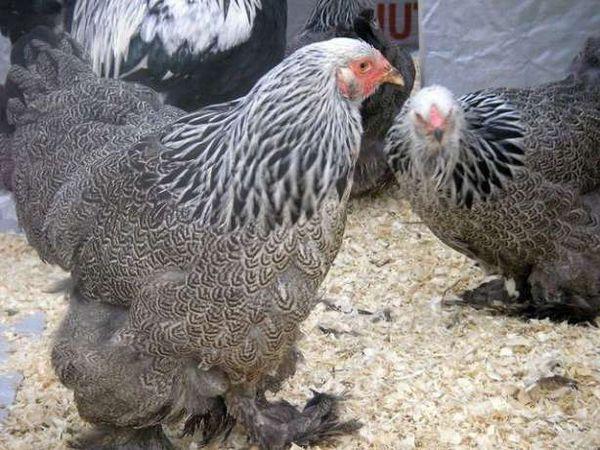
Planned herd replacement
It is periodically recommended to replace the poultry population, because keeping laying hens for more than 4 years is not recommended. Aging birds begin to fly worse. In addition, they become susceptible to infections as the body's defenses become lower.
Seasonal moult and break in egg production
In autumn, chickens begin the plumage change season.Along the way, the skin is cleaned. This period lasts about a month. The body of birds is experiencing a kind of stress, therefore, vitamin and mineral complexes are included in their diet. At this time, the chickens stop laying. This is a physiological norm, with the end of the molting period, egg production is fully restored.
Features of breeding and nutrition
The diet of Cochinquins should be as balanced as possible, since the tendency to obesity should be taken into account. Ideally, the menu will be compiled separately for each group of birds, taking into account the age and egg production. It is recommended that you choose consistent feeding times and stick to them.
Adult birds
The best option for them is a high-quality compound feed. A balanced diet includes meat and bone meal, grains of various crops, crushed chalk, vegetables. When composing a diet, it must be borne in mind that for normal egg production, chickens, unlike a rooster, need a large amount of calcium-containing minerals.
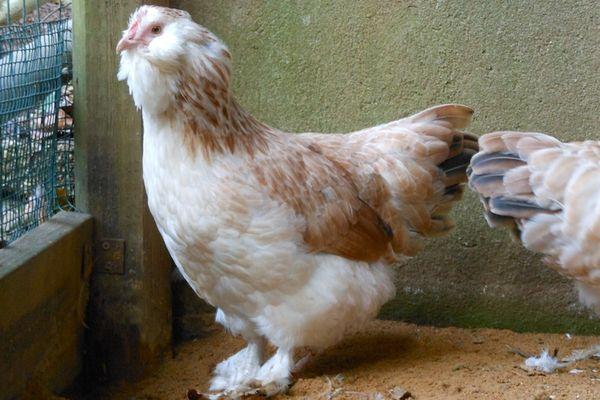
Adult birds are fed three times a day. They also need fresh grass or hay to cleanse the stomach.
Chicks
In the first days of life (up to 7 days), the chicks are given liquid food every 2 hours - a mash based on broth or milk. This type of feeding stimulates the early development of the young. Up to 16 weeks old, chicks require protein to develop properly.
In the second week of life, add dry grains (ground corn, semolina, rolled oats), boiled eggs, cottage cheese and vegetables. Calcium-containing minerals are introduced into the feed: chalk, crushed shell. The number of feedings is gradually reduced, bringing it to two feedings per day by day 30.
Bird breeding
Breeding birds is not difficult. Thanks to a strong incubation instinct, hens themselves take care of the offspring. If there is 1 rooster for 4 chickens, then the development of the herd will be constant and systematic.
For the mating period, the herd is necessarily divided into families. This action helps to increase the number of fertilized eggs, because all the hens in the flock will lay. At this time, the birds need enhanced nutrition.
Frequent illnesses
Parasites and infectious diseases are of great concern to birds.

Especially dangerous:
- fleas;
- ticks;
- chewing lice.
Preventive examinations should be done regularly to detect infection at an early stage. Ash baths are of great importance in the prevention of parasitic infections. With their help, the birds protect themselves.
In addition, birds can be susceptible to severe infectious diseases. Very common:
- salmonellosis;
- tuberculosis;
- pasteurellosis.
Salmonellosis
Salmonellosis is a dangerous bacterial infection to which small chickens are susceptible. Infection occurs through feed or contaminated water. The disease occurs with lung damage.
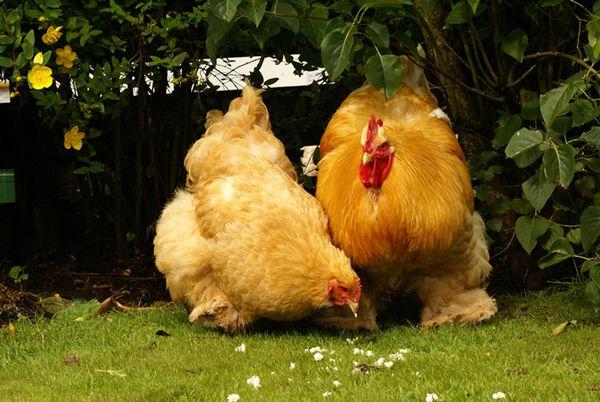
The main signs are: drowsiness, lethargy, watery eyes, difficulty breathing. Diarrhea, severe intoxication may join. The mortality rate is 15-30% of the livestock. Recovered chickens remain carriers for some time and are dangerous to surrounding birds.
Tuberculosis
A rather rare pathology in chickens. Transmitted to humans. The source of infection is usually infected manure. The severity of the course depends on the initial state of immunity. Granulomas (tubercles) develop on the affected organ, which lead to its enlargement and rupture.
Signs include bowel upset, the development of anemia, a decrease in egg production, and a deterioration in appearance. The treatment is complex, therefore, therapy is used only in relation to rare breeds of birds. Quarantine is established and potent antibiotics are prescribed.
Pasteurellosis
Pasteurellosis poses a danger to two to three month old chickens. In the acute course, there is a massive loss of livestock. Chickens become lethargic, apathetic.
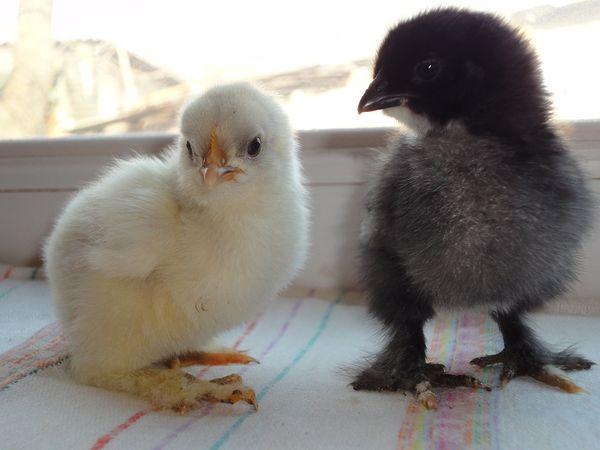
The main signs: refusal to eat, thirst, liquid foamy feces with blood, frothy discharge from the nose. The disease affects birds mainly in the autumn-winter period.
Breeding prospects in Russia
At present, Cochinquins are used only in households. Beautiful majestic birds adorn the poultry yard or summer cottage. Insufficient egg production and prolonged weight gain make their breeding on an industrial scale impractical.
You can buy chickens from private poultry farms. The price of an incubation egg is up to 200 rubles, a Kochinchin chicken is up to 300 rubles, and the cost of an adult bird reaches 2 thousand rubles, depending on the region.
